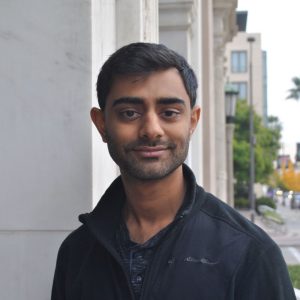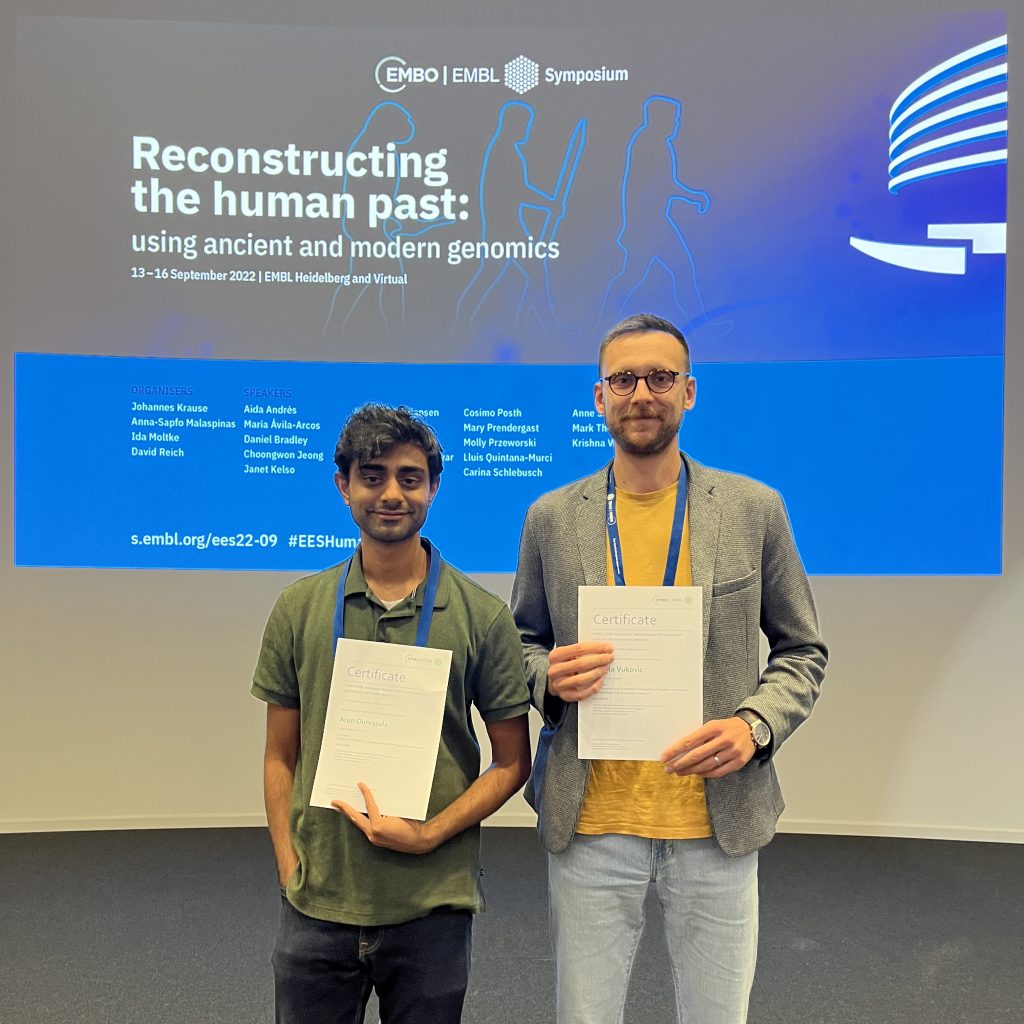Poster prizes at ‘Reconstructing the human past: using ancient and modern genomics’
If you attended the EMBO | EMBL Symposium ‘Reconstructing the human past: using ancient and modern genomics’ you were able to hear exceptional talks, meet the speakers, and participate in the poster sessions. In case you missed it, here we present to you the two winners of the best poster prizes!
Genomic evidence for a complex emergence of early modern humans
Selected by the poster judging panel
Presenter: Arun Durvasula

Abstract:
The emergence of early modern humans several hundred thousand years ago was marked by distinctive morphological and behavioural changes that are evident from skeletal and archaeological data. However, the genomic changes associated with this transition are unclear. Here, we provide new genetic perspective on this period by comparing the rate of coalescence on the autosomes to the X chromosome through time. We hypothesized that this comparison would be informative of differences in population structure in males compared to females because the X chromosome spends twice as much time in females compared to males. In addition, such a comparison could be informative about selection processes because mutations are rapidly exposed to selection in hemizygous males. We used the Pairwise Sequential Markovian Coalescent (PSMC) to reconstruct the coalescent history of the autosomes and X chromosome for 83 present-day females. We find that for a period lasting from approximately 1.3Mya-500Kya, the ratio of effective population size is significantly above the null expectation from a model where the two sexes behave similarly in all demographic respects, there is random mating, and there is no selection. Then, between approximately 500-150Kya, the ratio dips significantly below the null expectation. These observations are consistent with several interpretations, of which we highlight three. One possibility is a reduction in reproductive skew due to a reduction in the intensity of polygyny. However, this model is insufficient by itself to explain the magnitude of the decrease in the ratio around 300Kya, which is driven either by increased coalescence on the X chromosome or by reduced coalescence on the autosomes. A second possibility is that these observations are consistent with a model of population divergence followed by admixture to form a hybrid population with hybrid incompatibilities forming on the X chromosome during divergence. A third possibility is an intensive period of selection affecting the X chromosome more than the autosome in the latter period, whether driven by hybrid incompatibilities or other facts. Additional analyses have the potential to distinguish these scenarios. Our results suggest that the emergence of early modern humans was complex and left a detectable trace in the genomes of living humans.
West Country story – a detailed investigation of Neolithic and Bronze Age individuals from south-west England
Determined by people’s choice vote
Presenter: Nikola Vukovic

Abstract:
Four thousand years before the common era (BCE), the Neolithic expansion to Britain displaced local hunter-gatherer societies, introducing a radically different, more sedentary lifestyle. Two millennia later, a new migratory wave reached Britain, through the Bell Beaker folk, again transforming the established genetic and socio-cultural landscape of the island. While distinct burial rituals and material artifacts underline the strong cultural differences between the two populations, the Bronze Age practice of reusing more ancient Neolithic tombs renders the differentiation of individuals through archaeological study alone problematic. In order to finely investigate the population dynamics that occurred during the transition between the Neolithic and the Bronze Age in Britain at an individual resolution, we employed a genomic approach on 30 individuals (dated c. 4000-1300 BCE) from seven sites in South Western England. Our analyses reveal a pattern consistent with a genetic turnover, while signs of admixture between the populations are visible as well. First kin relationships between four individuals provide a direct insight into the makeup of a Neolithic multigenerational family. On three occasions, we find the remains of Bronze Age individuals buried within Neolithic sites, suggesting a possible trend of burial site reuse. By integrating genetic and archaeological analyses, our study delivers a snapshot of one of the most influential demographic shifts in British history, shedding light on both the individual history of these tombs as well as the region’s wider socio-cultural transformation.
The poster prize winners

The EMBO | EMBL Symposium ‘Reconstructing the human past: using ancient and modern genomics’ took place from 13 – 16 September 2022 at EMBL Heidelberg and virtually.